Xiaofeng Jin
Plane Spiral OAM Mode-Group Based MIMO Communications: An Experimental Study
Mar 11, 2021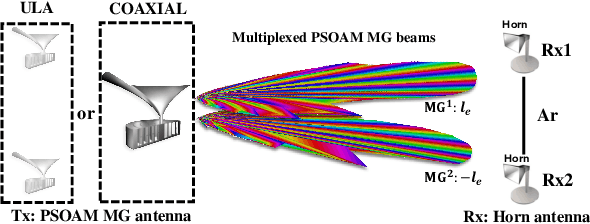
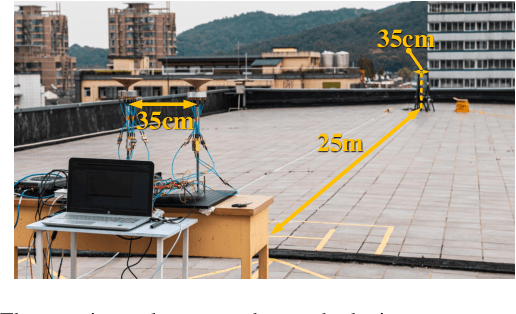
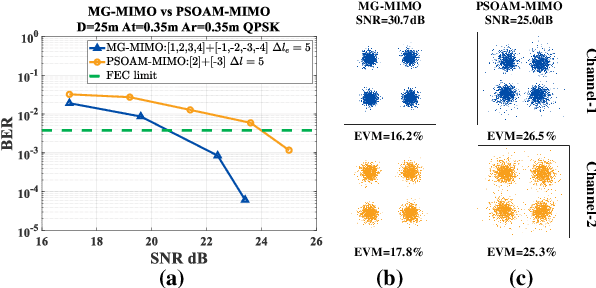
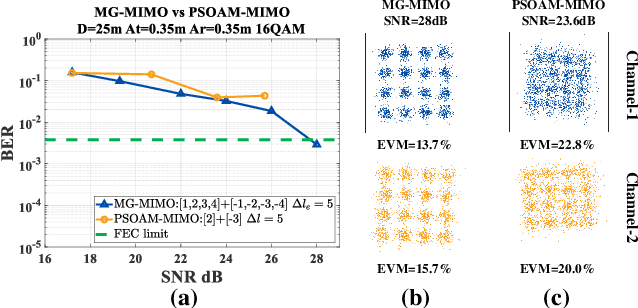
Abstract:Spatial division multiplexing using conventional orbital angular momentum (OAM) has become a well-known physical layer transmission method over the past decade. The mode-group (MG) superposed by specific single mode plane spiral OAM (PSOAM) waves has been proved to be a flexible beamforming method to achieve the azimuthal pattern diversity, which inherits the spiral phase distribution of conventional OAM wave. Thus, it possesses both the beam directionality and vorticity. In this paper, it's the first time to show and verify novel PSOAM MG based multiple-in-multiple-out (MIMO) communication link (MG-MIMO) experimentally in a line-of-sight (LoS) scenario. A compact multi-mode PSOAM antenna is demonstrated experimentally to generate multiple independent controllable PSOAM waves, which can be used for constructing MGs. After several proof-of-principle tests, it has been verified that the beam directionality gain of MG can improve the receiving signal-to-noise (SNR) level in an actual system, meanwhile, the vorticity can provide another degree of freedom (DoF) to reduce the spatial correlation of MIMO system. Furthermore, a tentative long-distance transmission experiment operated at 10.2 GHz has been performed successfully at a distance of 50 m with a single-way spectrum efficiency of 3.7 bits/s/Hz/stream. The proposed MG-MIMO may have potential in the long-distance LoS back-haul scenario.
Variational Representation Learning for Vehicle Re-Identification
May 07, 2019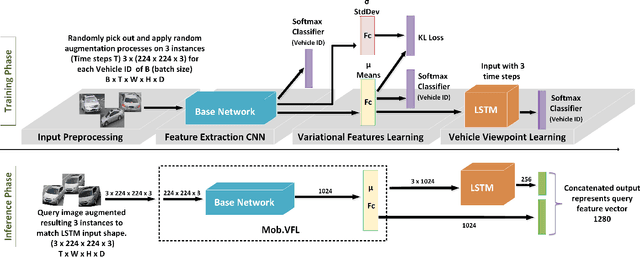
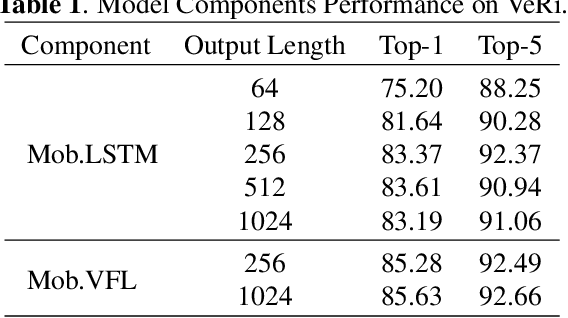
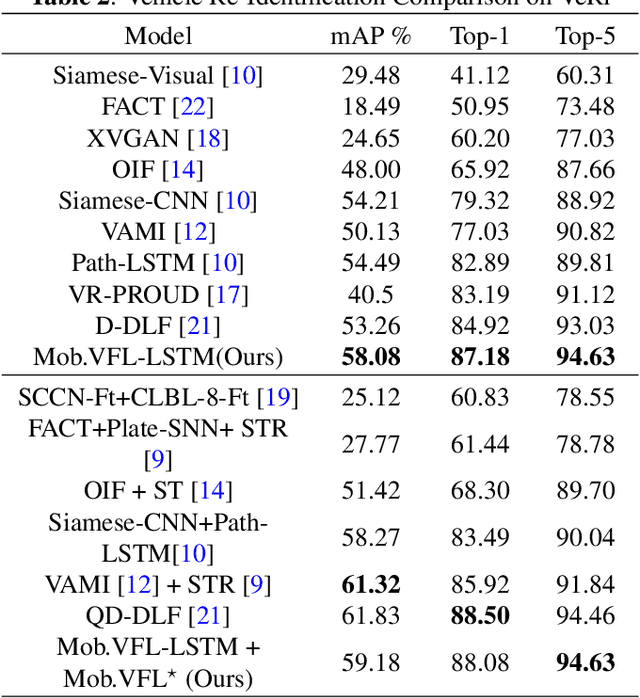
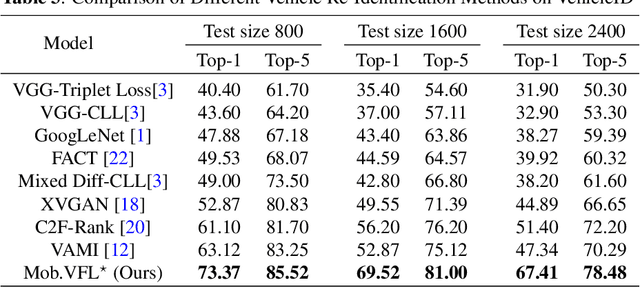
Abstract:Vehicle Re-identification is attracting more and more attention in recent years. One of the most challenging problems is to learn an efficient representation for a vehicle from its multi-viewpoint images. Existing methods tend to derive features of dimensions ranging from thousands to tens of thousands. In this work we proposed a deep learning based framework that can lead to an efficient representation of vehicles. While the dimension of the learned features can be as low as 256, experiments on different datasets show that the Top-1 and Top-5 retrieval accuracies exceed multiple state-of-the-art methods. The key to our framework is two-fold. Firstly, variational feature learning is employed to generate variational features which are more discriminating. Secondly, long short-term memory (LSTM) is used to learn the relationship among different viewpoints of a vehicle. The LSTM also plays as an encoder to downsize the features.
 Add to Chrome
Add to Chrome Add to Firefox
Add to Firefox Add to Edge
Add to Edge